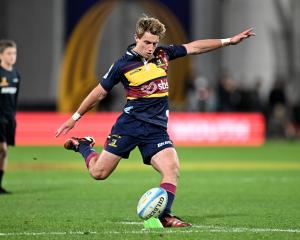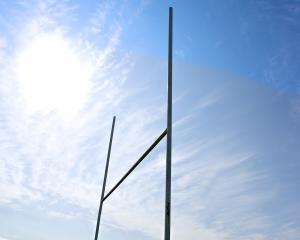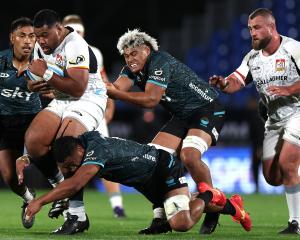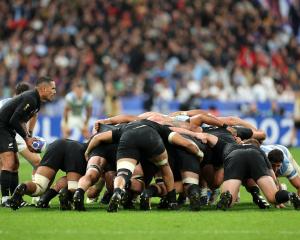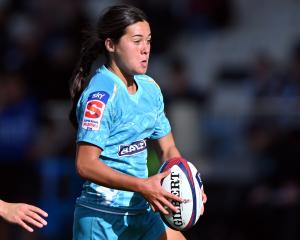Is the gap really closing? It is a question that has been on the lips of many rugby fans worldwide for the past decade. The northern hemisphere teams have indeed had their successes over this time. But it seems that now more than ever in recent years they are truly competitive with the southern hemisphere "big-three".
While in years gone-by the Tri-Nations teams would be dominant on their end-of-year tours, 2014 has seen them be anything but that. The final score in games involving the heavyweights of the two hemispheres was 6-5 in favour of the south. Of those six, three come from the All Blacks, while one was a sketchy Springbok win over the Italians. The wins have all been close and hard-fought and for the first time in a long while, you get the sense that the European teams are capable of threatening.
Not only are they prepared to actually use the ball, they are becoming more capable of doing so. After years of persisting with their tactic of keeping the game tight and kicking their goals, the northern hemisphere teams began to look to play a more positive game towards the end of the last decade.
The problem was they were not skilled enough to do so. Sure the intent was there. But whenever they tried to do something creative, they would find a way to mess it up. At times it was almost comical. The basic skill level of these international rugby teams was really that bad.
They have certainly improved, if not quite reached the level of the All Blacks. Their backs have, for the most part, gained the ability to catch, pass and exploit things such as two-on-ones, although the forwards do not approach the All Blacks for their ability in open play.
That is not to say that they have completely discarded their traditional approach. Against the Australians it tends to work well, as the Wallabies do struggle adapting to the tight game. The Springboks can come unstuck by it too, as they can try to take them on at their own game and do not always have things go their own way when they do.
For now though, the pace and aerobic fitness of the All Blacks keeps them a step above the rest. While the likes of Wales, Ireland and England are clearly capable of sticking with them, in the end the All Blacks ability to tire their opposition remains their greatest asset. If the European teams could get fit and learn to execute in the final 15 minutes of a fast-paced game, then surely they are now at a stage where they could compete with the world's best team too.
The first real signs of a resurgence of European rugby came at the last Rugby World Cup. While the English were a disaster and Scotland was painfully limited, the Welsh and Irish both showed themselves capable of competing with the best of them. Both possessed hard-working, physical tight-fives, skilful loosefoward trios and backlines capable of making in-roads. Along with this, both were young teams and looked set to only get better.
Indeed both have gotten better. The Irish in particular have emerged as something of a dark horse for next year's World Cup. They have done everything there is to do in the past twelve months, other than to beat the All Blacks. Even then they went as close as you can without actually winning.
The French, unpredictable as always, boast a dangerous backline and a tough forward pack. They are the one European team who have never truly fallen away on a consistent basis over recent years. But then that has been, and probably always will be, the French for you.
On the other hand, England and Italy have both seen drastic improvements over the past three years. A change in coaching staff has seen Italy adopt a new approach to the game. They look to use the ball and go out to win, rather than the old approach, which seemed to try to limit the damage. While they are not yet world beaters, they are undoubtedly a banana skin team.
England's game is based on their traditional strengths, but they have tweaked it to add another string or two to their bow. While the Brits may like to think the English are now capable of playing running rugby, they really are not on a consistent and look far better when they stay tight. Their team is based on a relentless forward pack. They are aggressive and work well as a unit to suffocate their opponent. By taking their time during breaks in play, they are able to get sufficient rest, enabling them to play at a high intensity and with good line speed.
Out wider they push up fast on defence, particularly in the midfield, essentially boxing their opposition in. Attacking-wise they are not regularly going to look to create, but at least possess the skill to make use of an opportunity when it arises. On their day they can beat anyone.
So there it is, four teams that have taken great strides and one which remains an inconsistent threat. Of the traditional powers, only Scotland remains a fair way behind the pack; they struggle too much defensively against teams that play with speed and width.
In contrast the southern hemisphere has seen mixed progress from their teams over the past three years. The All Blacks clearly are still the world's best. They are not necessarily the best team we have seen in recent times performance-wise, but they always find a way to win and are capable of playing a variety of game styles to do so.
South Africa have been steady improvers, showing more of a willingness to run the ball and doing so well. On top of this they retain their ability to play the tight game although crucially have not yet found a replacement for Fourie du Preez at halfback. While last year they were undoubtedly the world's second-best team, this year they form a group along with Ireland, England and Wales, all of whom are capable of beating each other.
Australian rugby is in a mess and that is no secret. They are still a dangerous team and are capable of beating anyone. But their ability to do so consistently seems to have disappeared and recent losses to France, Ireland, Argentina and England suggest they really are in trouble. They returned from their end-of-year tour with just one win from four games.
With this in mind, it becomes clear that the gap indeed is closing, or perhaps has even closed. If you take the All Blacks out of the equation, you would be hard-pressed to say the southern hemisphere remains the dominant power in world rugby. In fact if you swapped the All Blacks for any of the northern hemisphere teams, the north almost certainly would get the advantage.
It has reached a stage where it is not so much a matter of the gap between the two hemispheres, but the gap between New Zealand and the rest, in international rugby at least. Even when the All Blacks tour Europe they seem to be getting pushed far harder nowadays than they were five or ten years ago. Their superiority remains in their fitness levels and their ability to play a fast game for 80 minutes, while still executing well. No doubt eventually the rest of the world will catch up in this.
Putting any national allegiances aside, it is the best thing for world rugby. We approach World Cup year with seven teams that all have the ability to win the tournament and a bunch of others who could act as spoiler teams. That has got to make for a more exciting tournament and ultimately, a more exciting and meaningful fight to be the known as the world's best team.





